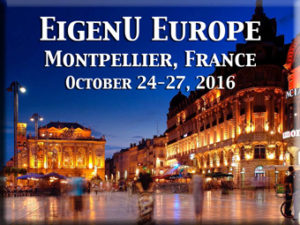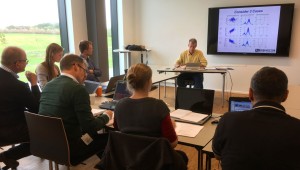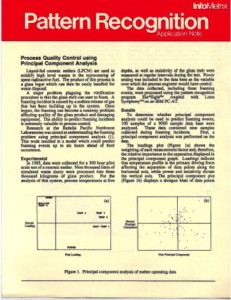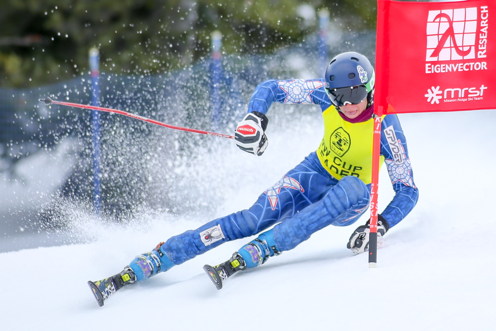The 13th Annual Eigenvector University was held April 29-May 4 in Seattle. It was a busy, vibrant week with 40 students with a wide variety of backgrounds attending along with 10 instructors. Users of our PLS_Toolbox and Solo chemometrics packages showed some of their recent results at the Wednesday evening poster session, which has become an EigenU tradition. Now combined with our PowerUser Tips & Tricks session, it makes for a full evening of scientific and technical exchange fueled by hors d’oeuvres and adult beverages.
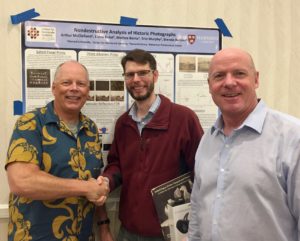
This year’s best poster, (as judged by the EVRI staff), was “Nondestructive Analysis of Historic Photographs” by Arthur McClelland, Elena Bulat, Melissa Banta, Erin Murphy, and Brenda Bernier. The poster described how Specular Reflection FTIR was used with Principal Components Analysis (PCA) to discriminate between coatings applied to prints in the Harvard class albums from 1853-1864.
For his efforts Arthur took home a pair of Bose Soundsport Wireless Headphones. Arthur is shown above accepting his prize from Eigenvector President Barry M. Wise and Vice-president Neal B. Gallagher. Congratulations Arthur!
The runner up poster was “Analytical Approach to Investigate Salt Disproportionation in Tablet Matrices by Stimulated Raman Scattering Microscopy” by Benjamin Figueroa, Tai Nguyen, Yongchao Su, Wei Xu, Tim Rhodes, Matt Lamm, and Dan Fu. The poster demonstrates how the the conversion of Active Pharmaceutical Ingredient (API) from its active salt form to its inactive free base form can be quantified in Raman images of tablets. Benjamin received a Bose Soundlink Bluetooth Speaker for his contribution. Kudos Benjamin!
We were also pleased to have several other very interesting poster submissions, as shown below:
Candace D. Harris, Xianglei Mao, Jiaojin Song, Jonathan Woodward, Lewis Johnson, and Ashley C. Stowe, “Multivariate Limit of Detection Interval for PLS Calibration Models via Laser Induced Breakdown Spectroscopy on U-235 and U-238 Enriched Glasses.”
Po Ki Tse, Amanda Lines, Sam Bryan, and Jenifer Shafer, “Chemometric Analysis to Predict the Formation of Interfacial Solids.”
Yulan Hernandez, Lesly Lagos and Betty C. Galarreta, “Selective and Efficient Mycotoxin Detection with Nanoaptasensors using SERS and Multivariate Analysis.”
Devanand Luthria and James Harnly, “Applications of Spectral Fingerprinting and Multivariate Analysis in Agricultural Sciences.”
Thanks to all EigenU 2018 poster presenters for a fun and informative evening!
BMW

 SEARCH
SEARCH

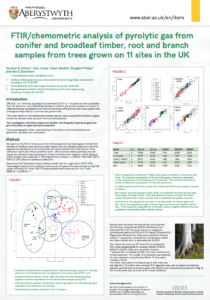 Says Allison, “The Eigenvector PLS toolbox, and later the MIA toolbox, has been a staple of my data analysis platform for over 10 years. If it wasn’t the best I would have moved on. The software integrates seamlessly into Matlab and I move between command line and gui at will. The flexibility and variety of algorithms in the PLS toolbox never ceases to impress me, and Eigenvector seem to never run out of ideas of how the toolbox can be refined and expanded… I heartedly recommend that PLS toolbox users come along to the annual Eigen University in Seattle, to hone their skills in basic to advanced chemomentrics. I’ve been to 3 and always learn something new and valuable. The atmosphere is vibrant, fun, friendly and informal, the quality of instruction excellent, and the location couldn’t be better.”
Says Allison, “The Eigenvector PLS toolbox, and later the MIA toolbox, has been a staple of my data analysis platform for over 10 years. If it wasn’t the best I would have moved on. The software integrates seamlessly into Matlab and I move between command line and gui at will. The flexibility and variety of algorithms in the PLS toolbox never ceases to impress me, and Eigenvector seem to never run out of ideas of how the toolbox can be refined and expanded… I heartedly recommend that PLS toolbox users come along to the annual Eigen University in Seattle, to hone their skills in basic to advanced chemomentrics. I’ve been to 3 and always learn something new and valuable. The atmosphere is vibrant, fun, friendly and informal, the quality of instruction excellent, and the location couldn’t be better.”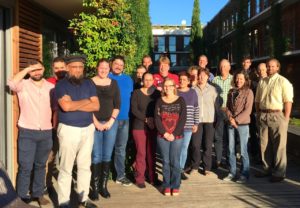


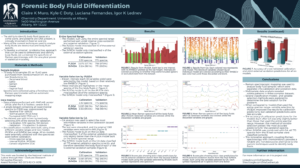 “PLS_Toolbox doesn’t just help with my research, it is an integral part of all of my work. I work with Raman spectroscopy, and my experimental data for any given project is usually thousands of spectra. I would say that PLS_Toolbox is just as important to my research as my Raman spectrometer, and I mean that. I wouldn’t be able to process the data or learn anything from it any way other than multivariate data analysis.” -Claire Muro, University at Albany PhD Candidate.
“PLS_Toolbox doesn’t just help with my research, it is an integral part of all of my work. I work with Raman spectroscopy, and my experimental data for any given project is usually thousands of spectra. I would say that PLS_Toolbox is just as important to my research as my Raman spectrometer, and I mean that. I wouldn’t be able to process the data or learn anything from it any way other than multivariate data analysis.” -Claire Muro, University at Albany PhD Candidate.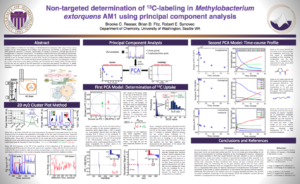 “EigenU helped give me the idea to apply PCA to my metabolomics project in the first place, and the skills I learned there helped me in applying it successfully and meaningfully. EigenU is a wonderful, positive and informative place to learn about chemometrics methods that I feel confident applying to not only my research, but suggesting to collaborators as well.” -Brooke Reaser, University of Washington PhD Candidate.
“EigenU helped give me the idea to apply PCA to my metabolomics project in the first place, and the skills I learned there helped me in applying it successfully and meaningfully. EigenU is a wonderful, positive and informative place to learn about chemometrics methods that I feel confident applying to not only my research, but suggesting to collaborators as well.” -Brooke Reaser, University of Washington PhD Candidate.